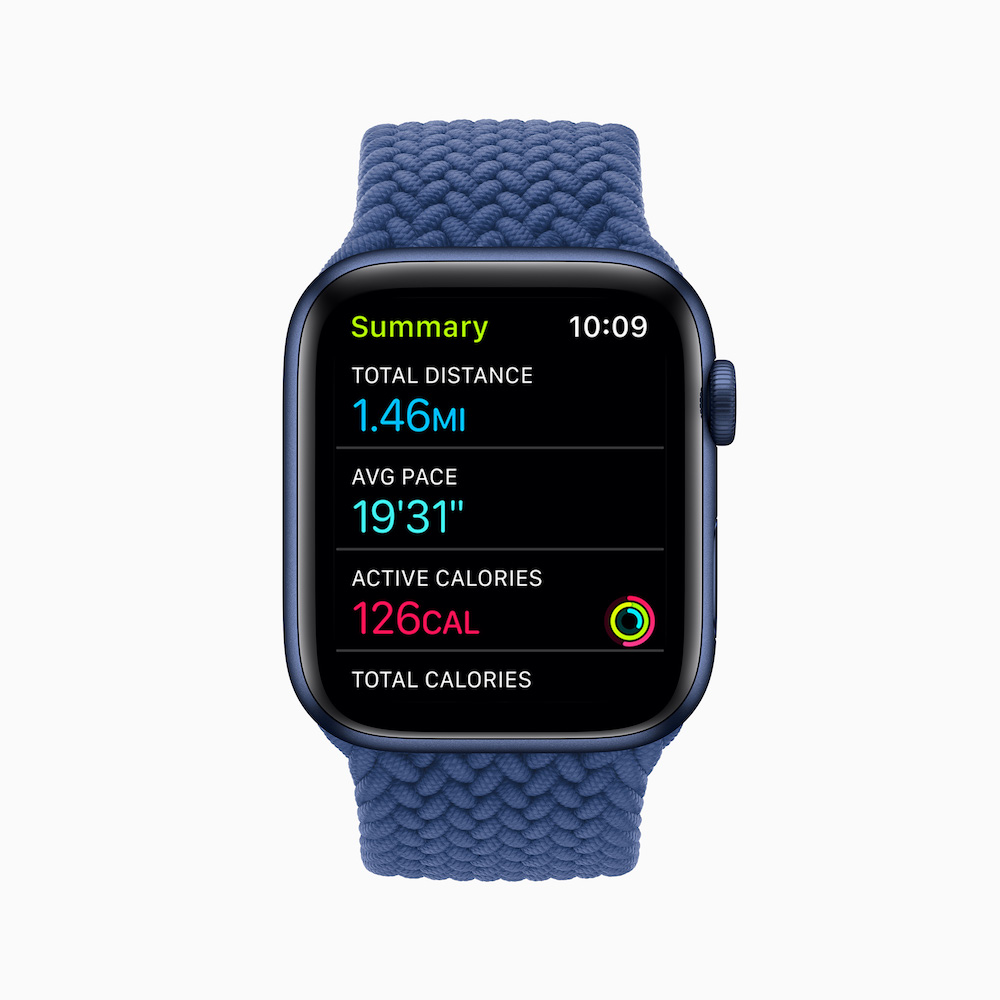I. Introduction of apple fitness

A. Significance of calorie tracking in apple fitness
In today’s fitness-conscious world, tracking calories has become an essential part of achieving health and fitness goals. Calorie tracking allows individuals to be mindful of their energy intake and expenditure, ultimately aiding in weight management and overall well-being. With the rise of wearable technology, like the Apple Watch, tracking calories has become more convenient and accurate than ever before.
B. Overview of Apple Fitness and its calorie calculation methods
Apple Fitness is a popular fitness app that provides users with personalized workouts, activity tracking, and guidance for achieving their fitness goals. One of the key features of Apple Fitness is its ability to calculate calories burned during various activities. To provide accurate calorie calculations, Apple Fitness utilizes different methods and factors, including basal metabolic rate (BMR), activity calories, and additional factors unique to each individual.
II. Apple Fitness Calorie Calculation Basics
A. Understanding Basal Metabolic Rate (BMR)

Basal metabolic rate (BMR) refers to the number of calories your body needs at rest to maintain basic bodily functions such as breathing, circulation, and cell production. It is the foundation on which calorie calculations are built. Apple Fitness takes into account factors like age, gender, height, and weight to estimate an individual’s BMR accurately.
B. Incorporating Activity Calories
In addition to BMR, Apple Fitness considers activity calories to provide a more accurate representation of the calories burned during physical activity. Activity calories are the additional calories burned while engaging in exercise or any physical activity beyond resting metabolic rate. Apple Fitness incorporates data from various sensors, including those on the Apple Watch, to track activity and calculate activity calories.
C. Additional Factors Considered by Apple Fitness
Apple Fitness goes beyond BMR and activity calories and takes into account several other factors to personalize calorie calculations. These factors may include body composition, exercise intensity, workout duration, and even environmental conditions like temperature and altitude. By incorporating these additional factors, Apple Fitness ensures more accurate and tailored calorie calculations for its users.
III. apple fitness and Heart Rate Monitoring
A. Importance of heart rate data in calorie calculation
Heart rate monitoring plays a crucial role in accurate calorie calculation. Measuring heart rate provides insights into the intensity of physical activity, helping to determine the number of calories burned. Heart rate data allows Apple Fitness to differentiate between various activity levels, such as light, moderate, and vigorous exercise, resulting in more precise calorie calculations.
B. Apple Watch and its role in tracking heart rate
The Apple Watch is equipped with advanced sensors that enable accurate heart rate monitoring during workouts and throughout the day. Using optical sensors and built-in algorithms, the Apple Watch measures heart rate continuously, providing real-time data that Apple Fitness utilizes for calorie calculations. The watch’s ability to monitor heart rate during different activities, including high-intensity interval training and swimming, makes it a versatile device for tracking calories burned.
C. How heart rate data is used to calculate calories burned
Apple Fitness utilizes heart rate data, along with other factors like age, weight, and exercise duration, to estimate the rate at which the body is burning calories. By understanding an individual’s heart rate response to exercise, Apple Fitness can more accurately calculate the intensity and duration of the activity and, subsequently, the calories burned. The advanced algorithms within the app analyze heart rate data in real-time, providing users with accurate calorie measurements.
IV. Integration of Personal Details and Fitness Metrics
A. Role of personal details in calorie calculation
Personal details play a significant role in accurately calculating calories in Apple Fitness. These details provide the necessary context for understanding an individual’s unique needs and physiological characteristics. By incorporating personal information, Apple Fitness can provide more accurate calorie estimates tailored to the user.
B. Utilizing user input data, such as age, weight, and height
Apple Fitness utilizes user input data, such as age, weight, and height, to calculate calories burned during workouts. These metrics are essential as they directly impact an individual’s Basal Metabolic Rate (BMR), which represents the amount of energy expended at rest. By knowing these details, Apple Fitness can calculate the energy expenditure associated with daily activities and exercise more accurately.
C. Incorporating fitness metrics, such as VO2 max and exercise history
In addition to basic personal details, Apple Fitness also considers specific fitness metrics such as VO2 max and exercise history. VO2 max is a measure of an individual’s maximal oxygen consumption and provides insights into their cardiorespiratory fitness level. By incorporating this information, Apple Fitness can estimate calorie burn based on an individual’s fitness level and oxygen utilization during exercise. Moreover, exercise history helps Apple Fitness to understand an individual’s training background and adjust calorie calculations accordingly.
V. Activity Types and Calorie Calculation Accuracy
A. Differentiating between indoor and outdoor activities
Apple Fitness differentiates between indoor and outdoor activities to improve the accuracy of calorie calculations. Indoor activities are typically performed within a controlled environment, while outdoor activities involve factors such as terrain, weather, and wind resistance. By considering the type of activity, Apple Fitness can make adjustments to calorie estimates more effectively.
B. How Apple Fitness adjusts calorie calculations for different activities

Apple Fitness uses algorithms that take into account specific activity algorithms to adjust calorie calculations based on the type of activity. For example, running on a treadmill is different from running outdoors due to the lack of terrain changes and wind resistance. By understanding these differences, Apple Fitness can provide more precise calorie estimates for each activity.
C. Factors affecting the accuracy of calorie calculations
Several factors can affect the accuracy of calorie calculations in Apple Fitness. For example, accuracy may be influenced by the availability and quality of heart rate data, as well as individual variations in physiology and metabolism. Additionally, environmental factors such as temperature, humidity, and altitude can impact energy expenditure during outdoor activities. Although Apple Fitness strives to provide accurate estimates, it is important to recognize that there can be limitations and individual variances that affect precision.
VI. Factors that Influence Calorie Calculation Accuracy
A. Individual variances and limitations

Individual variations, such as body composition, muscle mass, and metabolic efficiency, can affect calorie calculation accuracy. Each person has a unique physiology, and two individuals performing the same activity at the same intensity may burn a different number of calories. While Apple Fitness incorporates personal details, it is important to understand that individual variances can influence accuracy.
B. Impact of exercise intensity and duration
Exercise intensity and duration are crucial factors that influence calorie calculations. Higher intensity activities generally burn more calories than lower intensity activities. Similarly, longer durations result in higher overall calorie expenditure. Apple Fitness takes into account the heart rate data and exertion level to estimate the energy expenditure more accurately.
C. Limitations of wrist-based heart rate monitoring
Heart rate monitoring plays a crucial role in calorie calculations in Apple Fitness. However, it is important to acknowledge the limitations of wrist-based heart rate monitoring. Factors such as poor fit, excessive movement, and individual anatomical differences can impact the accuracy of heart rate readings. While Apple Fitness strives to provide accurate estimates, it is advisable to consider these limitations when interpreting calorie data.
By considering personal details, fitness metrics, differentiating activity types, and acknowledging factors that influence accuracy, Apple Fitness aims to offer users a more precise estimation of calories burned during workouts. However, it is crucial to recognize the limitations of any calorie calculation method and use them as a helpful guide rather than an exact measure. The next section of this blog will explore the importance of interpreting calorie estimates from Apple Fitness with caution. Stay tuned!



